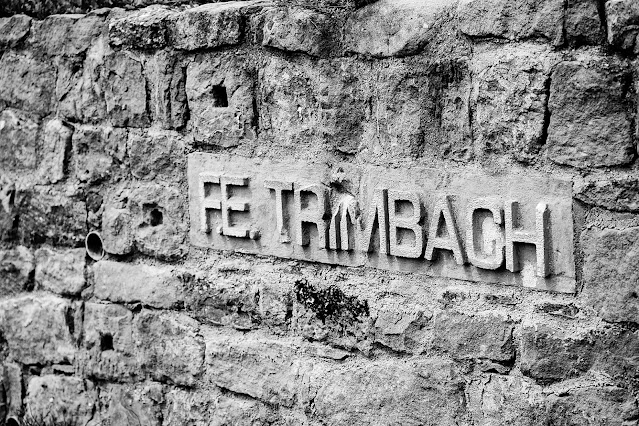 |
| Jean's everyday wine! |
Just ask Jean Trimbach!
Trimbach Pinot Gris Réserve Alsace (AC) 2017, 14% ABV
(c. €27.00)
For 13 generations, beginning in 1626, Maison Trimbach in Ribeauvillé, in the heart of Alsace, has devoted all its resources to producing great Alsace wines. This is one of them based on one of their remarkable Alsace grape varieties, the Pinot Gris. Delicious when young, these reach their finest expressions after some years of ageing.
It has a beautiful light gold colour. Aromas are gentle, a mix of floral and fruit (peaches, pears) and flowers. It is full-bodied with a gorgeous fruity palate, subtle spices, and a long finish. A generous wine, an ideal partner at the table. Suggested pairings include terrines, shellfish, oily fish, smoked fish, in sauce and raw, sushi, white meats, sweetbreads, mushrooms, spicy and aromatic dishes, Asian cuisine … Versatile, isn’t it?
Very Highly Recommended.
At a Kinsale tasting this year, Jean Trimbach (right) started with the 2018 vintage of this Pinot Gris Reserve. He was at pains to emphasise that this is a French grape, distinct from Pinot Grigio!
The grape now known in Alsace as Pinot Gris is thought to have originated in the Burgundy region of France. It is a colour mutation of Pinot Noir, and has been known since the Middle Ages. For centuries, it was called Tokay d’Alsace In Alsace until in relatively recent times, Hungary and the EU put an end to that.
Grapes & Wines indicates that Pinot Gris can produce really good wines in many countries “but I still go back to Alsace to see what makes it tick” and points the finger at the climate. in Alsace where “long hang times are possible; you can pick late for dry or off-dry, and even later for sweet ones.”
In Germany, Pinot Gris is known as Grauburgunder. It is a popular grape in the Baden region and, just like Alsace, is used to make a variety of wines, from dry to sweet.
*************
Check my growing list of top wines for 2023
*************
Check out my Good Value Wine List here
***************
Jean Trimbach’s remarks on his Pinot Gris being a French grape rather than an Italian one is made with a smile but the popularity of the Italian wine must still be irksome to some degree.
Jean is rarely slow to push the cause of Alsace in the wider world. And he also had a crack at Burgundy in Kinsale. Jean, who has been in this sales/marketing role since 1985, is always quick to point to the advantages that Alsace has, particularly when it comes to the more famous French region. “We have more Grand Cru wines than Burgundy because they have no granite, no volcanic, no slate… We have them all!” That big smile followed!
Trimbach wines are widely available in Ireland. I don't have a list of stockists for this but Dublin's 64 Wine has it.


















